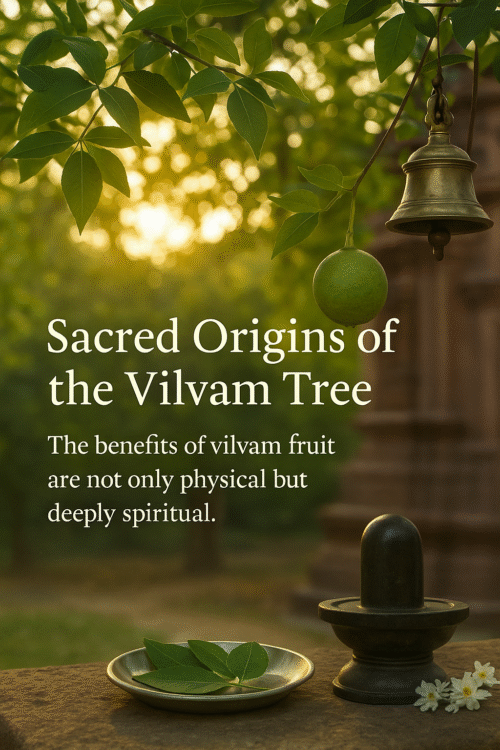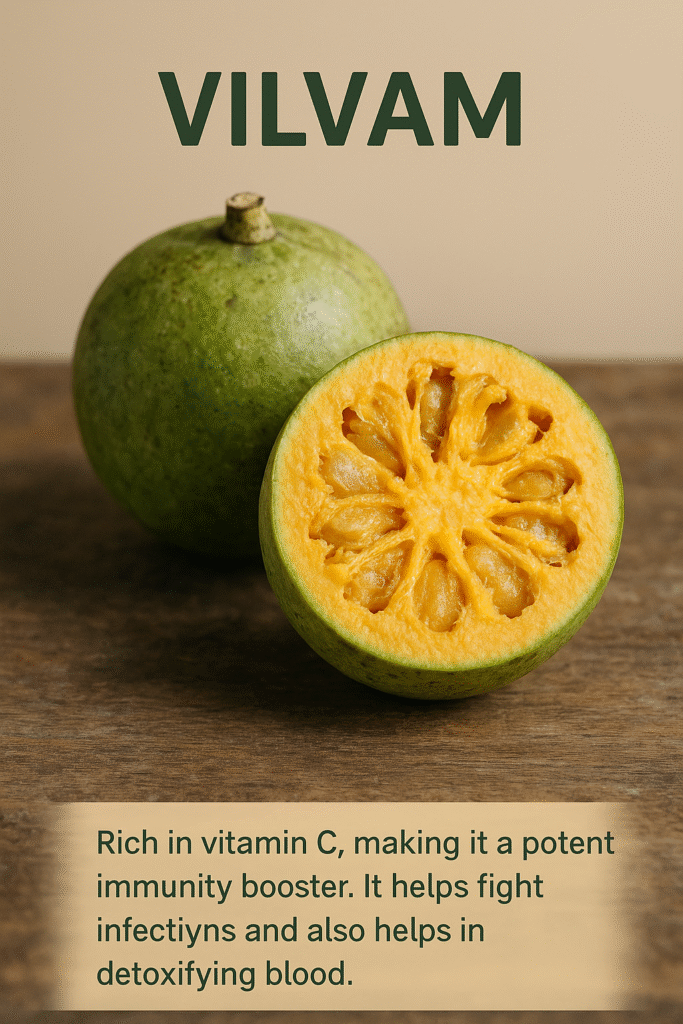
Disclaimer: This article is for educational purposes and is not a substitute for professional medical advice. If you have health conditions or take medication, consult your healthcare provider before adding Vilvam products to your regimen.
Introduction
The Bael or Vilvam tree ( Aegle marmelos ) has a strong spiritual and medicinal value to the Indians. It is present all over the country–in the temples of Kanyakumari, and even in the highlands of the Kashmir–and is most particularly holy in Shiva temples, the presence of which is deemed omenous. The roots, flowers, and leaves of this sacred tree have been valued throughout centuries in Ayurveda, Siddha medicine and even more recently, modern wellness practices.
The tree gives birth to sticky gum, which is resin-like in nature and has different uses both in traditional and commercial uses. Its round fruits with a hard, woody shell slowly turn golden-yellow in process of ripening and this is a sign that it has powerful medicinal and nutritional effects.
One of the most peculiar aspects of this tree is three-part leaf form, which represents the philosophical forces called Sattva (purity), Rajas (activity) and Tamas (inertia). However, in addition to symbolism, these vilvam leaves are densely filled with digestive, anti-diabetic, antimicrobial, and immune-promoting qualities- it renders them a potent source of natural medicine.
You will learn in this blog post the extensive array of the benefits of the vilvam fruit, the nutritional value of the fruit, its comparison to other related fruits, the numerous methods of eating the fruit, and important points of caution and sourcing. It does not matter whether you are curious about holistic wellness, conventional medicine, or just trying to find natural means of helping yourself feel better; this guide will make you see that the healing power of Vilvam is something you should approach with all your heart.
1. Nutritional Profile of Vilvam Fruit
Vilvam (also referred to as bael or Aegle marmelos) boasts an impressive nutritional composition—one of the primary advantages of vilvam fruit that underpins the myriad health assertions that follow.
| Nutrient (per 100 g fresh pulp) | Typical amount | Why it matters |
| Calories | 88 – 139 kcal | Light energy source for smoothies & snacks |
| Carbohydrates | ~32 g | Natural sugars combined with soluble fiber provide sustained energy |
| Dietary fibre | 2 – 4 g | Facilitates gut motility and nourishes beneficial bacteria . |
| Protein | 1.8 – 2 g | Small but useful addition to plant-based diets verywellfit.com |
| Fat | ≤ 0.3 g | Virtually fat-free, suitable for low-fat plans verywellfit.com |
| Vitamins | Riboflavin 1.2 mg, Vitamin C 8–12 mg | Antioxidant & metabolic support verywellfit.comindianexpress.com |
| Minerals | Calcium 85 mg, Potassium 600 mg, Iron 0.8 mg | Bone, nerve & blood health medindia.net |
| Phytochemicals | Tannins, flavonoids, coumarins | Key drivers of many benefits of vilvam fruit pmc.ncbi.nlm.nih.gov |

2. Bael (Vilvam / Bilva) The Cultural and Spiritual Importance of Bael.
In India there are trees above trees which are trees of life.
Among these objects of piety, the Bael tree or Vilvam maram, according to our Tamil, is one.
It has been venerated and consumed as a natural medicine as well as oftentimes the same breath, and has been marked and preserved over centuries.
Bael: Holy Tree of lord Shiva.
You will see in most Tamilatha families in the dawn of the day, every day, devotees going about picking Vilvam leaves, and never letting them drop on the floor.
This is followed by washing of these three-leaf forms of leaves (three little leaflets on a stem) and offering it to Lord Shiva by praying.
Why three leaves?
They represent the holy trinity, and this is what was believed in the ancient times: Brahma (creation), Vishnu (preservation) and Shiva (destruction) or body-mind-soul.
It is believed that when Bael leaves are given to Shiva, it cleanses and eliminates all the negativity and purifies the thoughts.
The Shiva Purana says that a single Vilvam leaf handed out of devotion is a thousand worships.
And it is the degree to which this simple leaf is entrenched in our classical spirituality.
Vilvam in Tamil Tradition
Bael is not merely a religious icon in Tamil Nadu but it is in life.
The dried Vilvam leaves are normally kept at home by the elders as a method of repelling the insects and any negativity.
The making of Vilvam fruit juice is done in summer seasons and it is a refreshing drink and it cools the heat.
The folk healers use the leaves of the bael in the treatment of fever, stomach pain, and even skin rashes.
It is also a very significant offering in the temples, especially during Maha Shivaratri and Pradosham in Chidambaram, Thiruvannamalai and Rameswaram.
You will have baskets of fresh Vilvam leaves and by the tank of the temple you will have their fragrance mixed with camphor and incense.
It is not only a ritual, it is a cultural beat, which brings together people, nature and God.
Spiritual Symbolism
The Bael tree is the representation of the equilibrium – between the power and the delicacy, the devotion and curing.
It is planted in dry places where all other trees are killed and this is an indication of survival through adversity.
The leaves are never brown in any season of the year and this is a sign of undying faith and innocence.
Sen Bael of the yogic philosophy represents Satva -the pure and peaceful part of the nature and of the balanced part.
They cool down the mind, rest the runaway thoughts, and usher inner calmness, and therefore a companion of meditation and mindfulness.
The monks and religious seekers even in the contemporary world use Bael juice in any period of fasting so that their energy and calmness is maintained.
It is the manner nature reminds us about it: the actual power is deaf, constant and established.
Not all only is medicine but connection about Bael.
Between humans and nature.
Between faith and health.
There was the mystical and the scientific.
And as we proceed in this adventure we will discover wherein the spiritual purity of Bael is consequently attended with its mighty nutritional and curative influences.
3. Health Benefits of Bael (Supported by Tradition and Science).
The bael tree has been referred to as a village pharmacy, rightfully.
Every section of the tree is healing energy, although some parts are bitter and some are sweet; all the same, healing energy, which is gentle, steady, and very restorative.
Since time immemorial, our forefathers have resorted to Vilvam to cure all our ailments starting with indigestion to infections.
And science is gradually proving what tradition has never doubted, Bael is all in favor of complete physical fitness.
We shall see how this holy fruit cures, of your bowel to your brain.
1.Enhances Intestinal and Gastrointestinal Wellbeing.
- In case of an upset stomach, bloating, heaviness, or irregular bowels, Bael is your greatest friend.
- The fresh guava fruit pulp has a high concentration of water-soluble fiber that mildly relaxes constipation.
- The green fruit is a natural astringent, and prevents diarrhoea and soothes the bowels.
According to Ayurveda, Bael is referred to as Deepana-Pachana- i.e. it enhances digestion and increases the appetite.
The following may be tried: a glass of Bael sherbet in summer, cools the digestive fire and makes you light and refreshed.
Natural Remedy for Diabetes
The Ayurvedic and Tamil medicine have been using bael leaves to control blood sugar.
Contemporary research proves that aegeline and flavonoids of Bael decrease glucose intake and enhance insulin sensitivity.
The stabilization of blood sugar levels can be achieved with the help of Bael leaf powder or Bael leaf juice.
It also helps in the functioning of liver, which is a major factor in glucose metabolism.
Protects Heart Health:
The antioxidants of Bael and potassium in it make your heart relaxed and robust.
Reduces bad cholesterol (LDL) and enhances good cholesterol (HDL).
Decreases oxidative stress – one of the key causes of heart disease.
The healthy blood pressure is aided by the natural potassium content it has.
Ayurveda regards the Bael as “Hrudya” -heart-strengthening.
Drinking Bael juice frequently is one of the kind and tender methods of giving your heart some love. [?]
Enhances the Immune System and Cleanses the Organism.
Bael is comparable to the inner cleanser.
Its antioxidants, tannins and Vitamin C bolster your immune system and assist the body to eliminate toxins.
The fruit and the leaves contain anti-bacterial and anti-fungal properties.
They assist in combating some common infections such as cold, coughing as well as mild fevers.
Bael juice or powder is a frequent usage promoting liver cleansing – very vital to general health.
My best tip: I usually drink a glass of Bael juice with a spoon of honey in between seasons, it is like providing my body with a silent armour against tiredness and cold.
Improves the condition of the skin and hair.
What you are feeling is usually reflected on your skin- and Bael does it both ways.
Its antioxidants inhibit acne, pigmentation and dullness.
The Tamil traditional remedies include eczema and skin irritation which are treated by using the leaf extract.
The Pitta (heat) of the body is controlled by the cooling effect of Bael -which avoids skin breakouts.
In the case of hair, a Bael powder combined with the coconut oil can be used to calm down the irritation of the scalp and stimulate its growth.
Effect: Skin is much clearer, hair is stronger and the mind is calmer.
Promotes the Health and Hormonal Balance of Women.
Vilvam leaf decoction is used in Siddha medicine in order to aid the reproductive health of women – particularly in postpartum care.
Helps to regain strength following childbirth.
May stimulates the milk production in lactation (in medium doses).
Reduces menstrual cramps because it is a cooler and an anti-inflammatory agent.
The village women in Tamil continue to use Bael as a low-tech, locally grown wellness partner, which indicates that the wisdom of the ages is still effective.
Relaxes the mind and alleviates stress.
Ayurveda being a Satvic herb, Bael is believed to bring the state of tranquility, sanity and emotional stability.
It is a calming agent to the nervous system and lowers irritability.
Frequent use can enhance the quality of sleep and mental clarity.
Bael juice is a long time consumption by monks and yogis in meditation or fasting – to remain focused and vibrant.
In some cases, I prefer taking warm Bael leaf tea and then proceeding to meditation. It is refreshing, as the nature is acting as a reminder to me to take my time and breathe.
An Environmentally friendly Anti-Inflammatory and Pain Reliever.
Bael has marmelosin and coumarins which have been found to diminish inflammation in the body.
It can be useful when one experiences joint pain, arthritis, or muscle tightness.
To treat inflammation, Bael root decoction (a component of Dashamoola) is used.
It has the calming effect to decrease pain with no severe side effects.
May Help in Weight Managemen
Bael juice or powder will assist in maintaining a healthy weight:
It enhances metabolism, digestion.
Reduces sugar cravings.
Cleanses the liver- which is an important organ in fat metabolism.
The Bael juice can be consumed before meals and therefore would make you feel fuller and more balanced.
Defends against Fatigue and Overheat.
Bael sherbet is the drink of choice in Tamil households.
It chills the system, replaces electrolytes and eliminates sun fatigue.
This is not a new fad nor a cultural thing but good nutrition.
Bael is an ideal natural cooling plant in the tropical climate, as it is a combination of potassium, fiber and antioxidants.
Science Agrees
Modern research has discovered Bael extracts to have the following properties:
Antioxidant (combats cell degradation)
Antimicrobial (stops microorganism infections)
Antidiabetic (blood sugar level)
Hepatoprotective (liver-protective)
Anti-inflammatory (Swelling, pain),
Scientists are still looking into its application in the treatment of chronic illnesses such as IBS, diabetes and arthritis – demonstrating that old medicines can be very compatible with contemporary medicine.
Bael does not show fast miracles, it is slow and regular, it restores the body to the balance.
It is not just a fruit, but it is a lifestyle that reminds about the fact that the real wellness starts with the balance between your diet, your religion, and your routine.
4. Choose Quality Bael Products
With Bael becoming a rising star in the wellness market, the options today are endless — powders, juices, capsules, candies, and even herbal teas.
But not all Bael products are created equal. Some are pure and effective, while others are diluted or packed with sugar and preservatives.
Here’s how you can pick genuine, high-quality Bael products — the kind that offer the same healing essence our ancestors trusted.
Recommended Picks
You can feature these products in your blog post with affiliate links to Amazon or brand websites.
Below are sample product boxes (you can adjust prices or links later):
1. Bael Powder (100% Pure Herbal Churna)
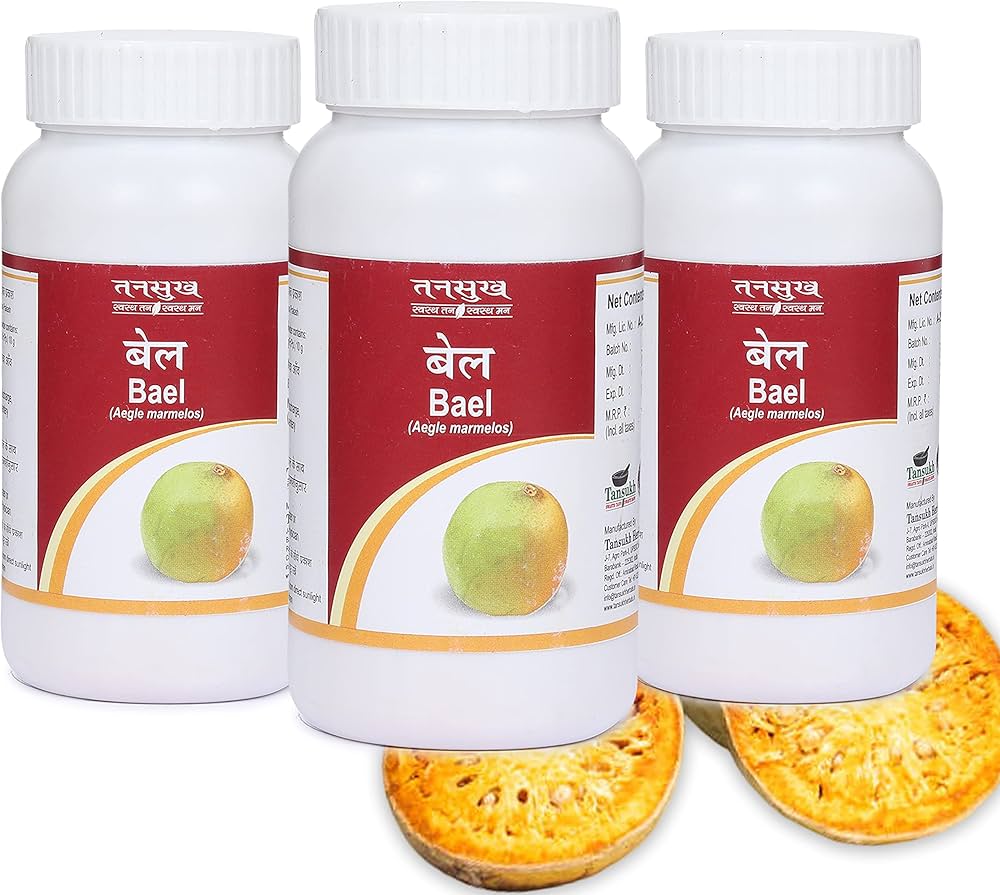
A trusted Ayurvedic brand with fine-grade Bael fruit powder.
100% Bael fruit pulp
No preservatives or added sugar
Great for digestion and detox
Buy on Amazon
2. Baidyanath Bael Juice (Natural & Fresh Pulp)

Traditional Ayurvedic Bael juice — perfect for daily health drinks.
Cold-pressed from ripe fruits
Boosts gut health and immunity
Rich in Vitamin C
Shop on Amazon
3. Bael Churna Powder
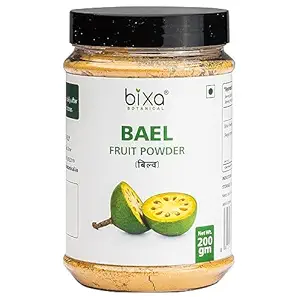
Budget-friendly and authentic formulation.
Ideal for digestive issues and acidity
Ayurvedic-certified product
Available in 100g pack
👉 Shop on Amazon
4. Organic India Bael Herbal Tea
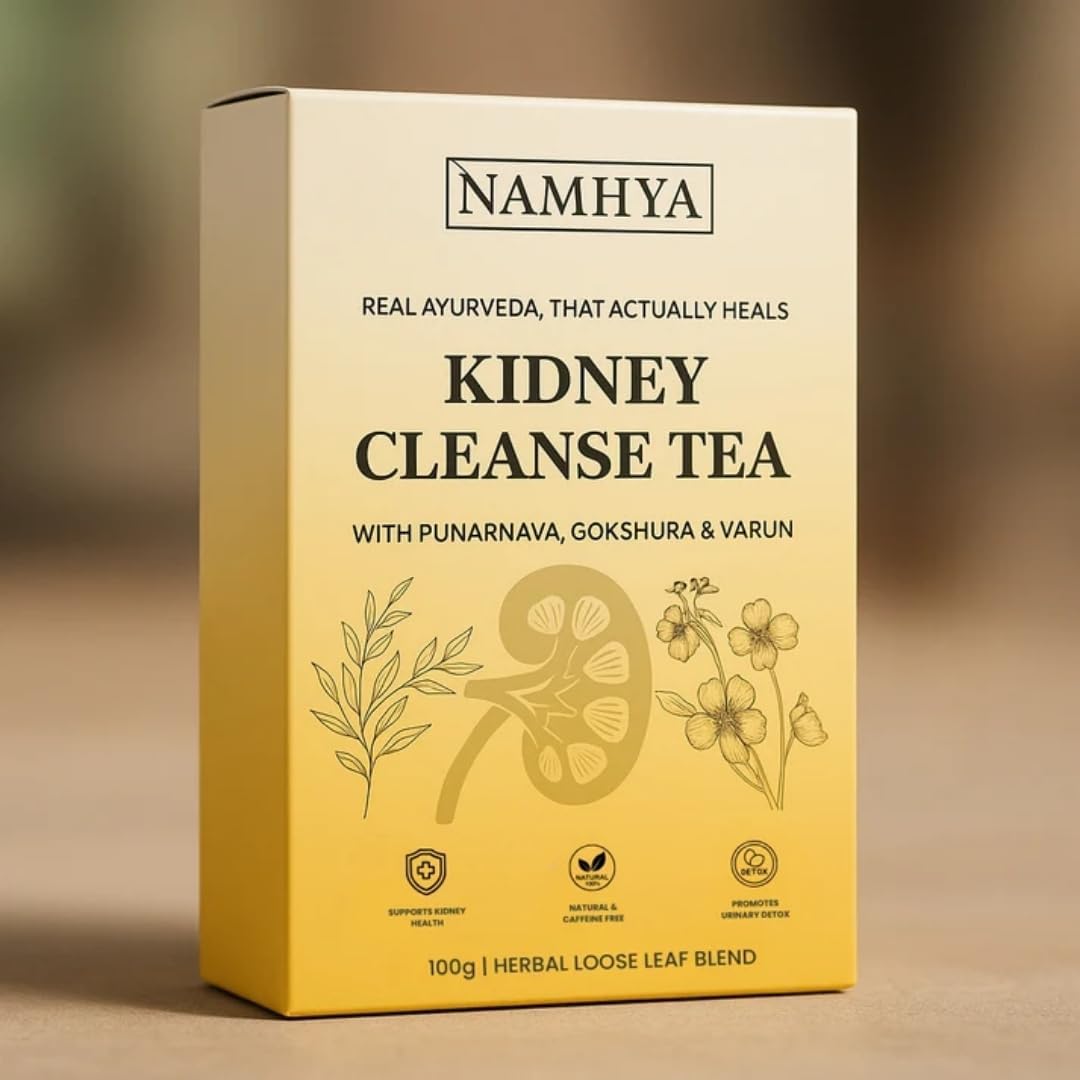
A soothing herbal blend for relaxation and blood sugar balance.
Made from Bael leaves and Tulsi
Organic and eco-friendly packaging
Great for daily mindfulness routines
Shop At Amazon
1. Fresh Vilvam Fruit
- How to use: Scoop out the pulp, mix with water or jaggery to make a traditional bael sherbet.
- Benefits: Excellent for digestion, cooling the body, and cleansing the gut.
- Best time to consume: Summer months when the fruit is ripe and hydrating.
2. Vilvam Juice
- How to use: Available fresh or bottled; drink 30–50 ml daily on an empty stomach.
- Benefits: Helps with constipation, acidity, and boosts immunity.
Note: Ensure it is preservative-free if store-bought.
3. Vilvam Leaf Powder
- How to use: Mix 1 tsp in warm water or add to herbal tea.
- Benefits: Supports blood sugar control, detoxification, and liver health.
- Popular with: Diabetics and people on natural detox plans.
4. Vilvam Capsules/Tablets
How to use: Usually taken 1–2 capsules per day with water, as advised by an Ayurvedic practitioner.
- Benefits: Convenient for those who want standardized dosage of vilvam for general wellness.
- Ideal for: Busy lifestyles and travelers.
5. Vilvam Herbal Tea
- How to use: Boil dried vilvam leaves or bark in water; strain and drink.
- Benefits: Relieves stomach issues, supports digestion, and promotes mental calm.
- Often combined with: Tulsi, ginger, or cinnamon for added effect.
6. Vilvam Jam & Chutneys
- How to use: Made from ripe pulp and natural sweeteners like jaggery. Use as a spread or mix with hot water for a quick drink.
- Benefits: Tasty and gut-friendly option for children and adults alike.
- Storage: Keep refrigerated and consume within a few weeks.
7. Vilvam Bark Decoction (Pattai Kashayam)
- How to use: Simmer bark strips in water and reduce to half. Drink warm.
- Benefits: Traditionally used to treat fevers, body pain, and fatigue.
- Used in: Siddha medicine and postpartum care.
6. Potential Side Effects, Dosage & Precautions
| Concern | Details | Practical tip |
| High fibre bloating | Rapidly jumping to 10 g powder/day may cause gas. | Start at 2 g and increase weekly. |
| Latex allergy cross-reactivity | Vilvam sap contains latex-like proteins. | Avoid if allergic to fig/latex; consult allergist. |
| Hypoglycaemia risk | Potent glucose-lowering in diabetics on medication. | Monitor blood sugar, adjust meds with doctor. |
| Pregnancy safety | Limited human data. | Stick to culinary amounts; skip supplements. |
General dosage: 50–100 g fresh pulp or 5–10 g powder daily for healthy adults unless otherwise advised.
7. FAQ
Q1. What are the main benefits of vilvam fruit?
Digestive balance, blood-sugar regulation, antioxidant support and gentle laxative action.
Q2. Is vilvam fruit safe for daily use?
Yes for most healthy adults in culinary doses; start small if you’re new to high-fibre foods.
Q3. Can vilvam powder replace fresh fruit?
Powder is convenient and concentrated but lacks the hydrating water content of fresh pulp.
Q4. How long does bael juice last in the fridge?
Consume within 24 hours; vitamin C degrades quickly.
Q5. Is bael the same as wood apple?
They’re related but distinct species; bael (Aegle marmelos) is sweeter and richer in vitamin C.
Conclusion
The Vilvam tree (Aegle marmelos) is much more than a sacred symbol — it is a complete natural healer. Every part of the tree, from its gum, roots, bark (pattai), leaves, to its nutrient-rich fruit, offers unique health benefits deeply rooted in Ayurveda and Siddha medicine.
Whether you’re seeking support for digestion, immunity, blood sugar control, detoxification, or inflammation relief, the vilvam tree provides safe, time-tested, and natural solutions. With its antioxidant-rich compounds, antimicrobial properties, and spiritual legacy, vilvam is a botanical treasure that deserves a place in every health-conscious lifestyle.
By understanding how to use each form—fresh fruit, juice, powder, leaves, or herbal decoctions—you can unlock the full therapeutic potential of this ancient tree and take a meaningful step toward holistic wellness.

